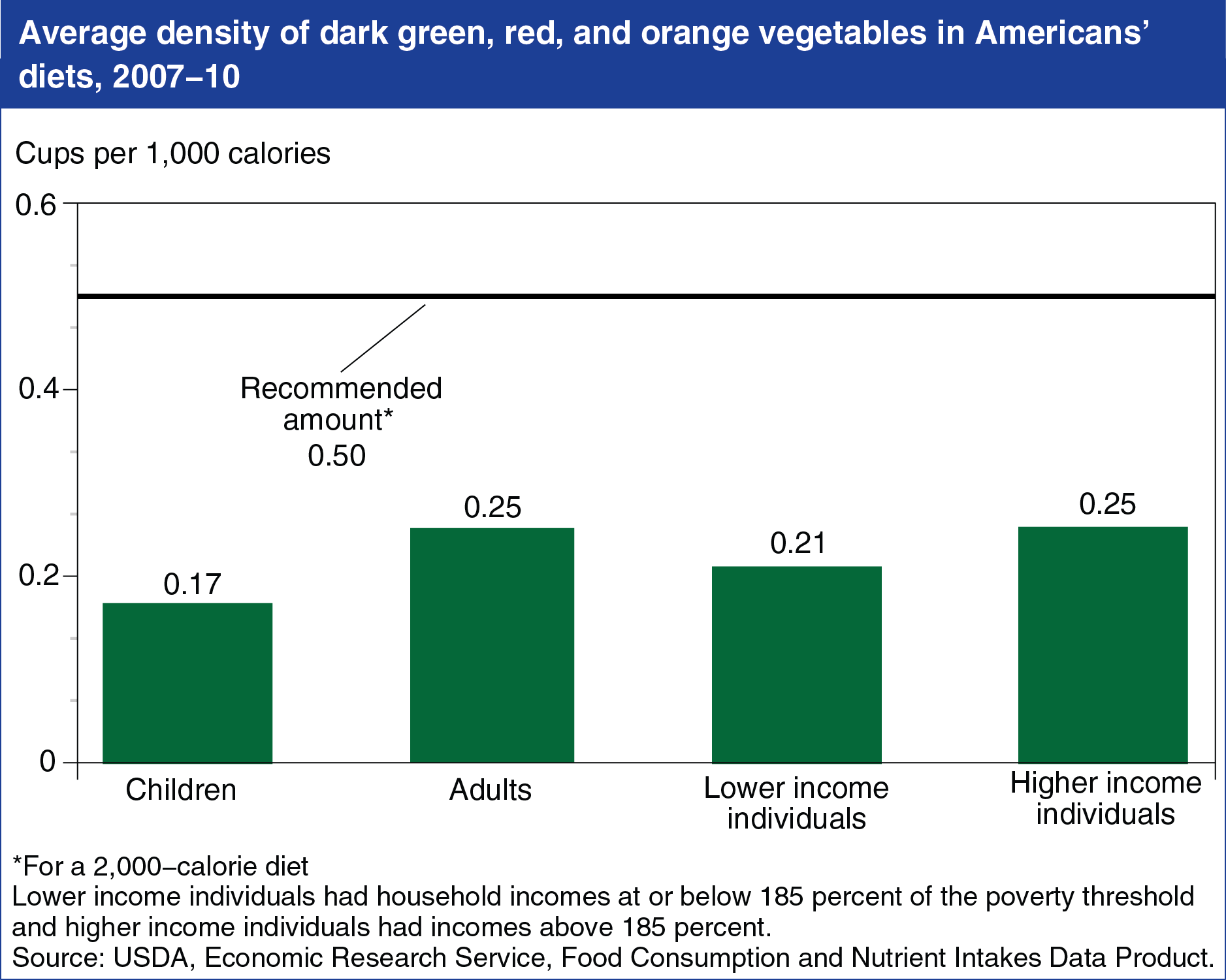Americans aren't eating enough dark green, red, and orange vegetables
- by Economic Research Service
- 11/13/2014

Expressing food consumption in terms of density—the amount of food eaten per 1,000 calories—allows a person’s intake to be compared with benchmark densities based on recommendations in the 2010 Dietary Guidelines for Americans. Such comparisons can reveal shortfalls and excesses in American diets. Analysis of intake data from the 2007-10 National Health and Nutrition Examination Survey (NHANES) found that Americans under-consume whole grains, fruits, low-fat dairy products, and vegetables. In 2007-10, U.S. adults consumed 0.76 cups of total vegetables per 1,000 calories and 0.25 cups of dark green, red, and orange vegetables, while children consumed 0.49 cups and 0.17 cups, respectively. The Dietary Guidelines recommend 1.25 cups of total vegetables and 0.50 cups of dark green, red, and orange vegetables per 1,000 calories for a 2,000-calorie diet. Lower income individuals consumed a smaller amount of dark green, red, and orange vegetables than those with higher incomes. This chart appears in “Food Consumption and Nutrient Intake Data—Tools for Assessing Americans’ Diets” in the October 2014 issue of ERS’s "Amber Waves" magazine.

